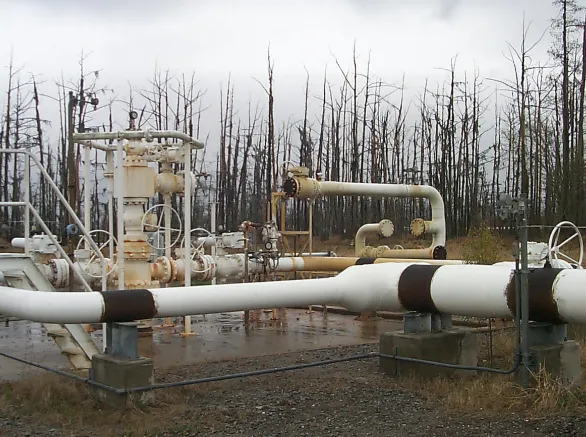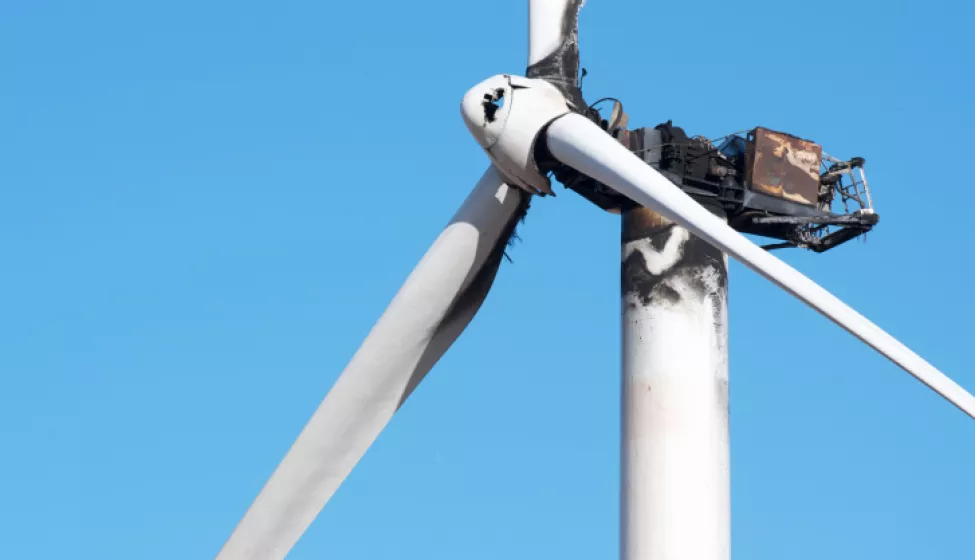September 7, 2023
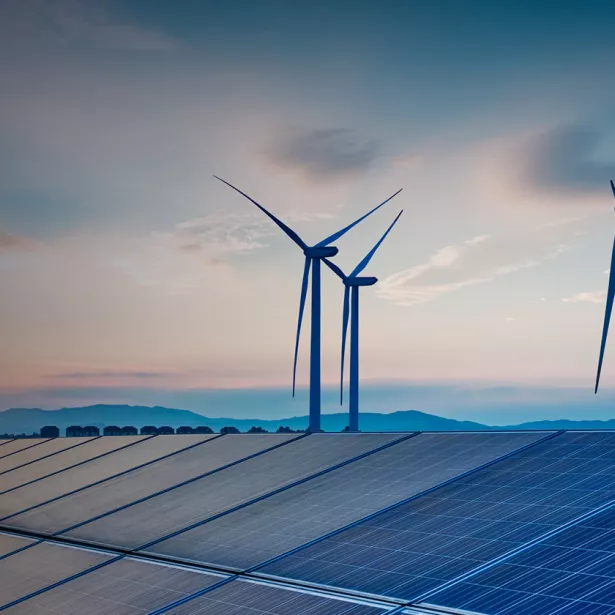
Adopting proactive fire prevention strategies can help wind farm operators prepare for continued industry growth and growing regulatory scrutiny
Last year, wind farms in the U.S. passed an energizing threshold, supplying over 10% of the country's grid-tied electricity. Yet for the 72,000 wind turbines now spinning, fire suppression systems remain optional.
Why?
One reason lies in the light historical regulatory touch applied to wind turbines, a carryover from the wind industry's 1990s origins in small-scale electrical generation. Additionally, turbine fires are considered rare and infrequently associated with life-threatening damage.
For operators, the combination of light regulatory pressure and a low incident rate has minimized incentives to actively install fire suppression systems. The National Fire Protection Association provides recommendations for fire safety of wind turbines in NFPA 850 "Recommended Practice for Fire Protection for Electric Generating Plants and High Voltage Direct Current Converter Stations."
Rethinking fire suppression and regulations for wind turbines
Although changes have yet to be announced for wind farms, there are indications that this hands-off regulatory approach to wind turbine fire safety could be poised for change.
At the local level, communities like Shasta, California, have been shooting down wind energy proposals due to concerns over the increased threat of wildfire and the difficulty of aerial fire-fighting over forestland. The industry is also facing criticism over the validity of its fire statistics. Research from the past decade, for example, suggests wind turbine fires may have been underreported, while newer studies question whether outdated figures are applicable to today's more complex turbines.
Perhaps most importantly, the wind industry is growing significantly. By decade's end, over 100,000 wind turbines — many of which will be part of an advanced generation of more powerful turbines — will be operating at U.S. grid-scale wind farms. The majority of those farms will be located near wilderness or on open plains, with growing implications for the potential impacts of any turbine fires.
At such a scale, wind turbine manufacturers, owners, and operators can expect the maturing wind industry to see increased regulatory scrutiny. Coupled with the low cost of installing or retrofitting fire suppression systems compared to the high probability of total turbine loss in the event of a fire, advancing from reactive to proactive fire safety strategies can help stakeholders prepare for the future of wind farm regulations now.
Many nacelle fires lead to total turbine losses or pose significant downtime for wind farms.
Fire prevention strategies for the primary origin of wind turbine fires
While most turbines come equipped with lightning protection systems, limited protection is provided against other potential fire causes for the most common ignition location in wind turbines: the nacelle. The nacelle is the electrical box at the center of the turbine that houses a tightly shared space for the gearbox, generator, cables, and electronic systems. Ninety percent of wind turbine fires begin in the nacelle, where combustible materials lie in proximity to electrical wiring and rotating machinery.
Nacelle turbine fires typically begin in one of three areas: the converter and capacitor cabinets, the transformer, or the brake. Electrical faults or mechanical overheating can lead to ignition of polymeric components or lubricating oils. With the abundance of fuel and high wind speeds, fires can start and grow quickly to engulf the fiberglass nacelle and surrounding plastics. Many nacelle fires lead to total turbine losses or pose significant downtime for wind farms.
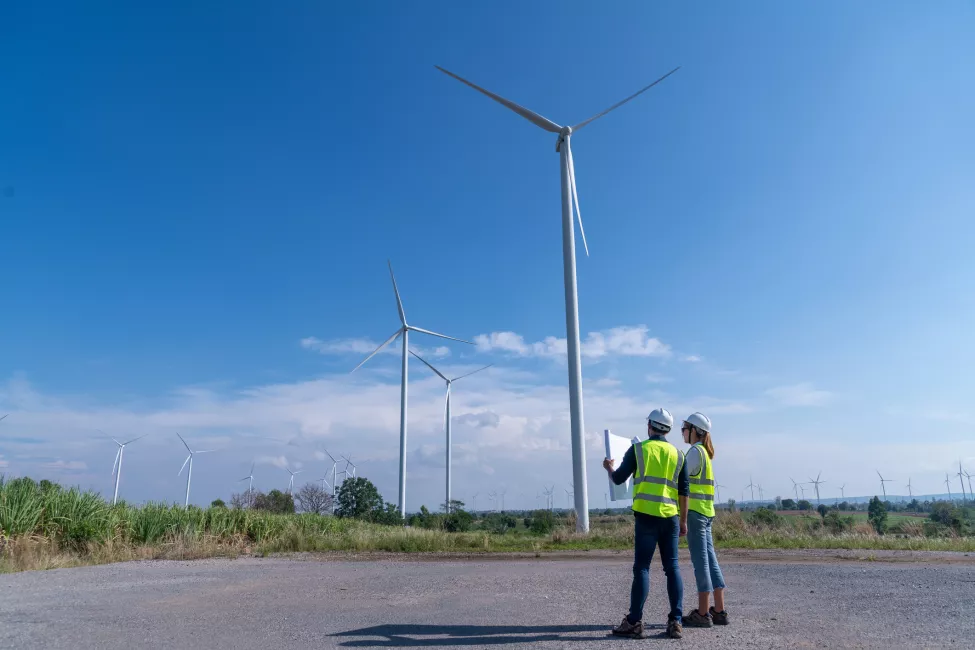
Each wind farm requires careful engineering and environmental assessments to determine the right combination of fire suppression systems and strategies, but at a high level, common opportunities to reduce fire risk include:
- Installing an automatic fire suppression system, such as a clean agent, inert gas, or aerosol extinguishing system.
- Replacing polymer composites with advanced fire-resistant materials and using non-combustible hydraulic and lubricating oils.
- Integrating traditional detection systems, such as heat and smoke detectors, linear heat detecting cables, and air-purification systems, wired through a turbine's existing supervisory control and data acquisition system (or SCADA). This can permit remote notification of a developing fire and support rapid response.
- Substituting mineral-oil-based products with synthetic lubricating oils that can help reduce combustion of the hundreds of gallons of oil held in the turbine and its transformer unit.
Growing incentives for fire suppression systems in wind turbines
Technological advancements in turbine capacity and recent industry disclosures about aging turbine components suggest that an unprecedented number of wind turbines will be installed, repaired, or replaced in the next few years.
With some new, upgraded turbines running approximately $5 million each to install, the wind industry may have developed an internal incentive to adopt fire suppression systems, some of which can have retrofit price tags between $10,000 and $30,000. As wind farms prep for eventual replacements, retrofitting fire suppression systems remains a viable interim opportunity to both safeguard existing turbines and increase the ability of operators to coordinate fire protection across their facility's footprint, which typically extends over thousands of acres.
In addition, the ongoing trend of developers buying wind farm projects through power purchase agreements means that stakeholders can find themselves with a mixed fleet of turbines sourced from multiple manufacturers. In such cases, procuring fire suppression systems may require extra legwork to streamline retrofits and sync with hazard response systems.
In advance of regulations, wind turbine fire suppression remains optional — but important
The growth of wind power means more people rely on it. Across the U.S., new onshore turbines are being installed at a rate of about 3,000 per year. In Texas, for example, which boasts 75% of the nation's wind turbine fleet, wind power generated 25% of the state's electricity in 2022. Numbers like that make it clear that the stakes are rising for safeguarding wind farm assets and operations.
While federal regulations mandating fire suppression at wind farms remain in development, the growing cost and value of individual turbines means that wind farm stakeholders have ample motivation to pursue fire suppression retrofits and designs on their own accord.
What Can We Help You Solve?
Exponent conducts engineering evaluations, failure analyses, and environmental, health, and materials risk assessments in direct support of utilities, wind energy and transmission developers, equipment manufacturers, and investors.
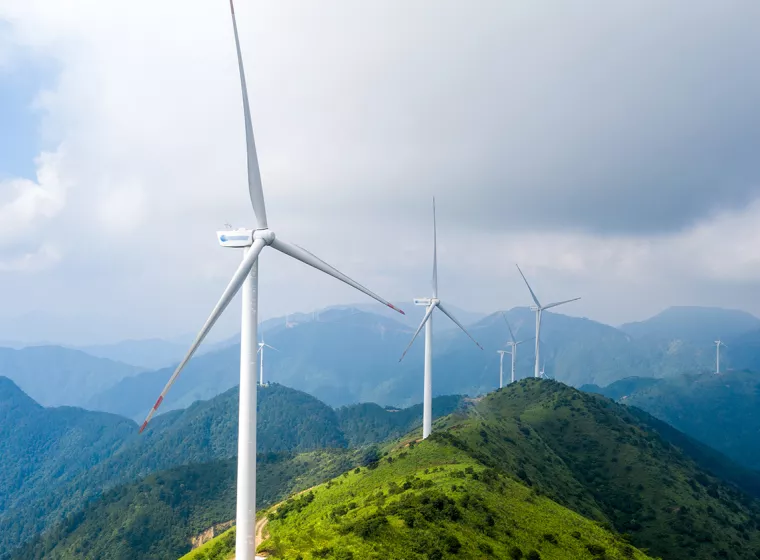
Wind Power Consulting
Comprehensive wind energy consulting, engineering evaluations, failure analyses, and environmental, health, and materials risk assessments.

Thermal Sciences Expertise for Energy Systems
Energy systems design, safety, and compliance consulting across a range of industries, including oil and gas, renewable and utility power generation.
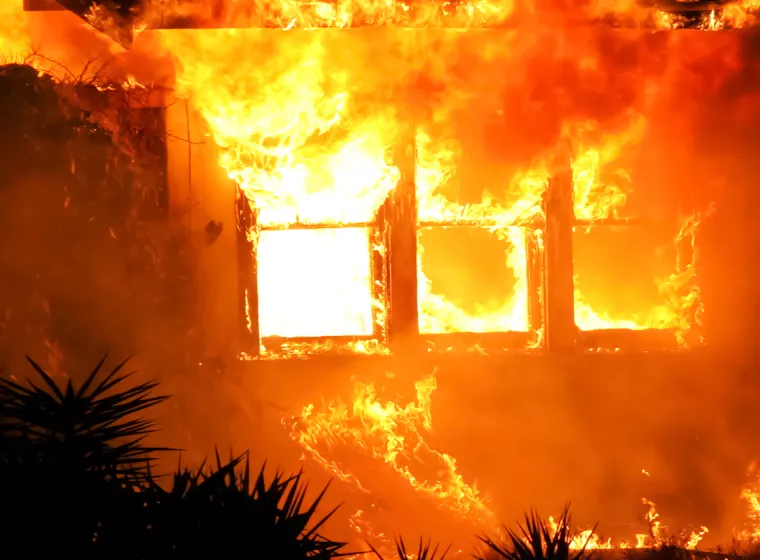
Fire & Explosion Investigations
In-depth field examinations and high-tech modeling and testing to determine the origin and cause of fires, gas explosions, dust explosions, and other explosions...

Renewable Energy
Renewable energy consulting services and stewardship to address your complex project challenges, from assessment and implementation to execution.
![COMPUTER SYSTEMS & CONTROLS [EECS]](/sites/default/files/styles/cards_home_card/public/media/images/GettyImages-1352474775.jpg.webp?itok=EahM3u35)
Instrumentation & Control Systems
Improve the reliability and performance of control systems and their sensors, processors, actuators, and logic.

Systems & Controls
Critical systems and controls support, from missile guidance and ADAS technology to utility power generation and consumer electronics.
Insights
